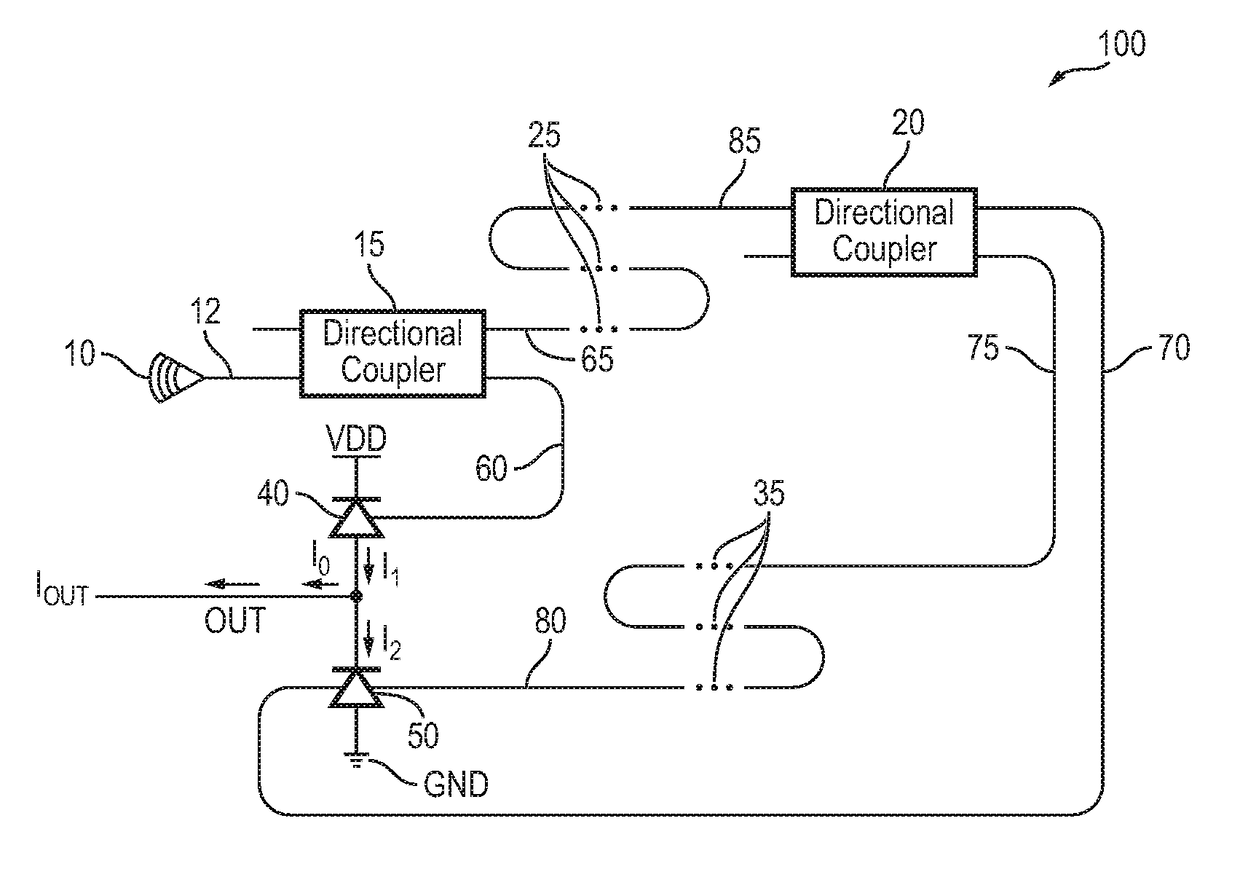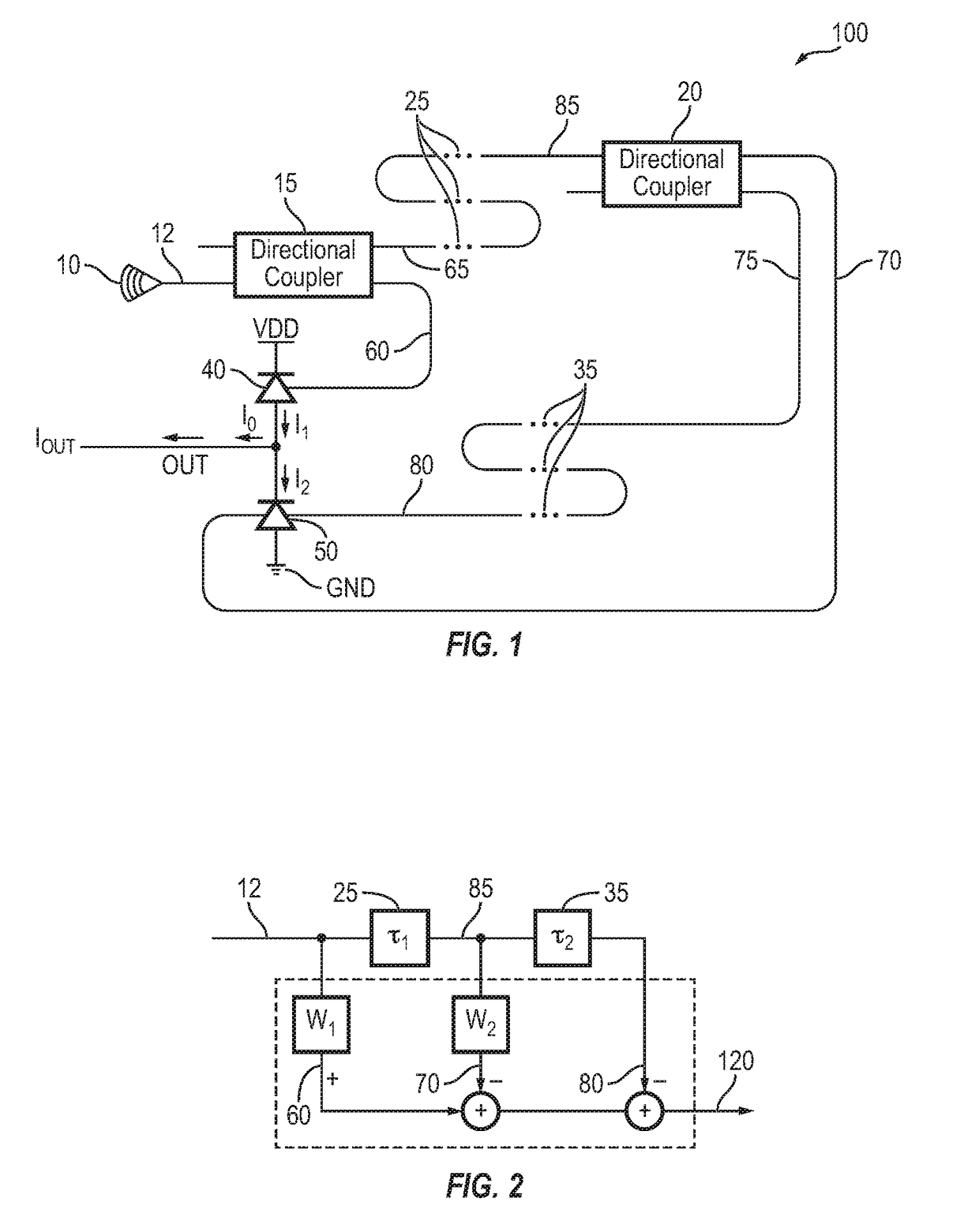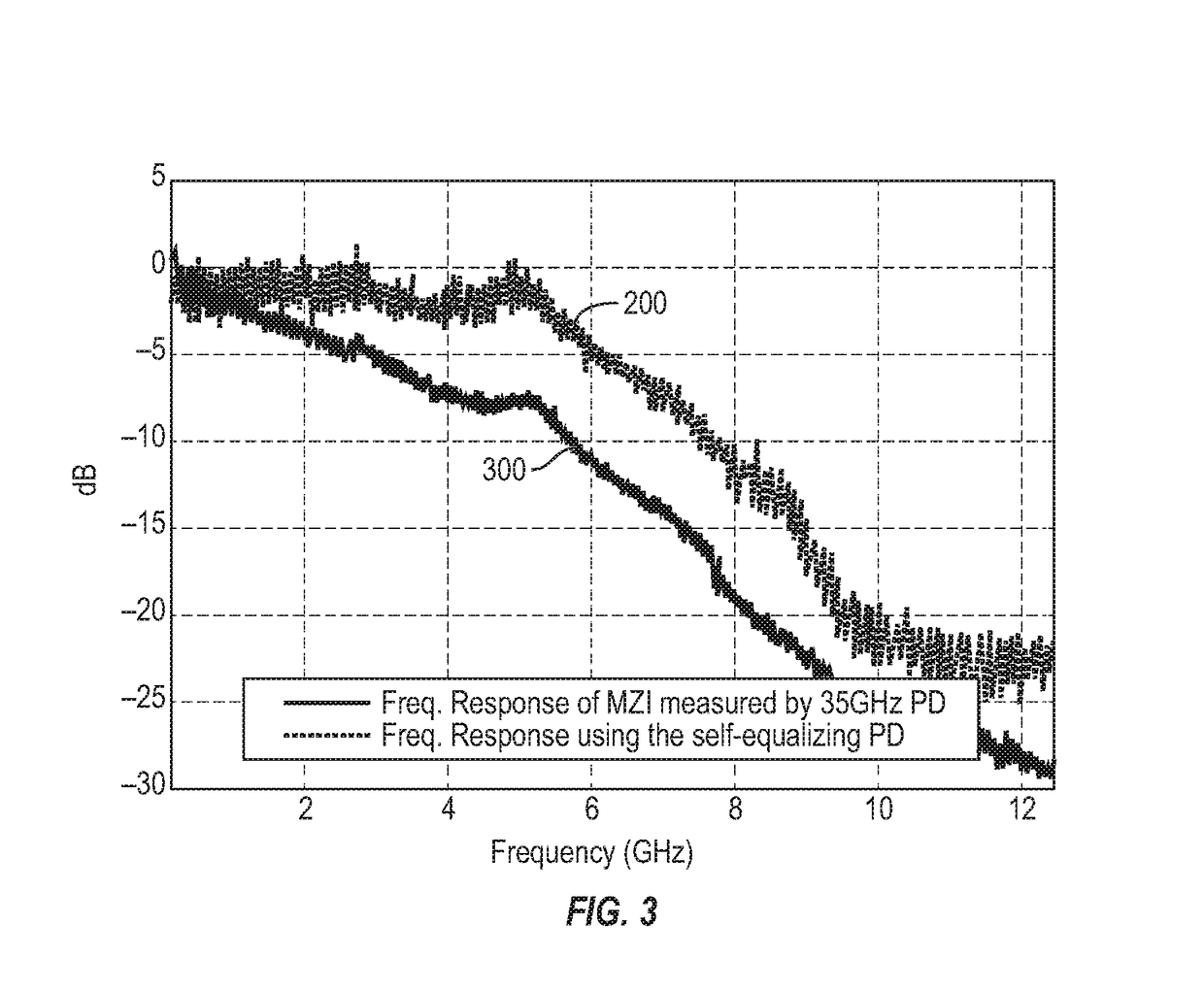Self-equalizing photo detector
a photo detector and self-equalization technology, applied in the field of self-equalization photo detectors, can solve the problems of moving communication speed bottleneck, limiting the data rate of such cables, and the implementation cost of optical communication channels remains an impedimen
- Summary
- Abstract
- Description
- Claims
- Application Information
AI Technical Summary
Benefits of technology
Problems solved by technology
Method used
Image
Examples
Embodiment Construction
[0038]An equalizer, in accordance with one embodiment of the present invention, operates as a high-pass filter to cancel out channel (link) attenuations at relatively high frequencies. The high-pass filter may be disposed anywhere in the channel, such as in the transmitter or receiver, or implemented through digital signal processing. In optical links, such high pass filter may be implemented using electro-optical components available in a typical silicon photonics process.
[0039]An electro-optical equalizer, in accordance with embodiments of the present invention, benefits from the high optical bandwidth and thus achieves more enhanced equalization than conventional equalizers that use only electrical components. The electrical components used in an electro-optical equalizer, in accordance with the present invention, eliminate the strong wavelength dependence of the narrowband grating-based equalizers. The equalizer substantially improves the incoming optical signal directly before ...
PUM
 Login to View More
Login to View More Abstract
Description
Claims
Application Information
 Login to View More
Login to View More - R&D
- Intellectual Property
- Life Sciences
- Materials
- Tech Scout
- Unparalleled Data Quality
- Higher Quality Content
- 60% Fewer Hallucinations
Browse by: Latest US Patents, China's latest patents, Technical Efficacy Thesaurus, Application Domain, Technology Topic, Popular Technical Reports.
© 2025 PatSnap. All rights reserved.Legal|Privacy policy|Modern Slavery Act Transparency Statement|Sitemap|About US| Contact US: help@patsnap.com



